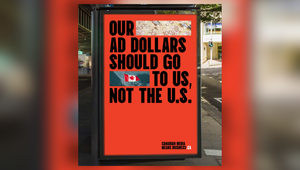
Elon Musk Is Suing the WFA - So What?

Well, that didn’t last long, did it? Elon Musk’s detente with the advertising industry has been short lived. Fresh from his attempted charm offensive at this year’s Cannes Lions, both on stage and behind the scenes, the executive chairman has re-declared war.
This week, X announced a lawsuit with an open letter from its CEO Linda Yaccarino. They’re looking to take on the Global Alliance for Responsible Media (GARM), the World Federation of Advertisers (WFA), and major corporations CVS Health, Mars, Orsted and Unilever, which are members of the WFA in an antitrust suit. (GARM, which was set up in the wake of the Christchurch mosque shooting that was live streamed on Facebook, describes itself as “a cross-industry initiative established in 2019 by the World Federation of Advertisers (WFA) to help the industry address the challenge of illegal or harmful content on digital media platforms and its monetization via advertising”.)
In the open letter, Linda Yaccarino alleged that the group had waged an ‘illegal boycott’ against X and a number of other companies (including the video platform Rumble, which is joining X in the suit).
The WFA is currently not commenting on the suit [see update below], so as yet we’ve just heard the X and Rumble side of the story – a story that appears to have been carefully crafted to tie into X’s positioning as the “marketplace of ideas” and entrench the platform’s unique place in the current cultural and political discourse.
There’s also been plenty of response from X users themselves, from Elon fans chanting ‘LFG!’ (that’s, err, “let’s fucking go”, from the Deadpool & Wolverine movie) and pledging to boycott the brands named in the suit, to adlanders criticising the platform’s brand safety and pointing out that companies are perfectly free to choose where to spend their advertising dollars.
But while it’s easy to take sides and get drawn into the heated politics surrounding the suit or latch onto the surface-level criticisms, to understand what’s really going on – and the degree to which these criticisms really hold water – requires an understanding of the USA’s antitrust laws.
Louis P. Di Lorenzo is a partner at law firm Davis + Gilbert and specialises in advertising and marketing. According to him, it’s not uncommon for trade associations to be drawn into antitrust lawsuits (that is accusations of collusion that inhibits competition) because they, by definition, involve players in a particular sector working together towards goals that impact the whole sector.
“Every industry has their own trade associations, and they do have to be careful. Typically, for a trade association, there will be rules and standards about what can be discussed, what can be on the agenda, and making sure that nothing is being done for an unlawful purpose”, says Louis. “I think what makes that complicated, also, is that antitrust law always looks to the agreement … trade associations in the US are very practised now, when they do have some sort of agreement or some sort of pledge, [making sure] that it has nothing to do with price and it’s only pro-competitive.”
The line between collaboration and collusion can be a tricky one to navigate – but that doesn’t mean that associations can’t set standards or lay out agreed best practice. “The Federal Trade Commission explicitly acknowledges the pro-competitive benefits of trade organisations setting standards to make the industry operate more efficiently as a whole, such as setting interoperability standards,” he says. Using the analogy of an association that agrees not to work with a company that uses a particularly polluting chemical in its work, Louis draws a comparison with what appears to be the situation with the WFA and GARM. “This is a group saying, we have moral, ethical, brand safety problems with working with a competitor, we don’t think we should work with them. That, to me, is not really an issue. The antitrust issue comes where they’re looking to change prices in the market or exclude competitors in some way.”
One argument that may play in the defendants’ favour, according to Louis, is that there have been previous cases when a boycott enacted for political or moral reasons has been accepted by the judge. If a boycott has been put in place because of issues of brand safety and a misalignment between the brands’ or organisations’ values and the content on X and the conduct of its leadership, this may play in GARM and the WFA’s favour.
“There is a line of cases in the United States by the Supreme Court, actually, where the Supreme Court has said that boycotts exercised for a political purpose are not to be subject to the antitrust laws. It's a fairly vague precedent, but it does lend support if they're boycotting solely for a moral or political reason, that's not something that the antitrust laws have a concern with. Because the purpose is not to restrain competition,” says Louis. However, he notes, there is the caveat that these precedents involved boycotts by social justice organisations (the NAACP and the National Organization for Women), rather than pure commercial entities, and have been inconsistently applied by lower courts.
Of course, one also needs to prove a boycott actually took place. The document that seemingly catalysed the lawsuit is a report from the House of Representatives Judiciary Committee called, “GARM’s Harm: How the World’s Biggest Brands Seek to Control Online Speech”. This report saw the WFA, GARM and executives from the likes of Unilever and WPP’s GroupM interrogated, and comes to the conclusion that GARM may have organised a boycott and “has organised its trade association and coordinates actions that rob consumers of choices is likely illegal under the antitrust laws and threatens fundamental American freedoms”.
It’s important to note that the report’s findings may not carry much legal weight – the House Judiciary Committee chair is Jim Jordan, a close ally of Donald Trump. While we don’t know what evidence X and Rumble will present in their case, the evidence presented in the HJC report is far from watertight proof of a boycott, including self-effacing, tongue-in-cheek jokes, incomplete email chains and the existence of an internal member survey that questioned member attitudes to the acquisition of X (then Twitter) by Elon Musk.
The proof of collusion is critical. Individual companies are, of course, free to choose where to put their ad money – and multiple companies are free to independently reach the same decision.
“The most classic antitrust example would just be price fixing, right? Two companies come to an agreement and they say they’re going to charge a certain amount, they try to increase the prices because they know that if they agree to a certain price level, they can keep the prices artificially high,” explains Louis. “If they both independently increase their prices, that wouldn’t be illegal. But it’s the agreement, the collusion in deciding to do that.”
For legal lay people spectating from the sidelines, it’s worth noting that there’s a freedom of speech argument implied in Linda Yaccarino’s open letter.
“The consequence – perhaps the intent – of this boycott was to seek to deprive X’s users, be they sports fans, gamers, journalists, activists, parents or political and corporate leaders, of the ‘Global Town Square’,” she writes. “To put it simply, people are hurt when the marketplace of ideas is undermined and some viewpoints are not funded over others as part of an illegal boycott.”
However, this particular angle looks likely to have been crafted to play in the court of public opinion rather than the court of law.
“There’s no legal merit to that,” says Louis of the freedom of speech and censorship argument. “It’s irritating for me because this has been part of the political dialogue for a while. I think reasonable minds can differ about the ideas of censorship, but it has nothing to do with the First Amendment. The First Amendment only restricts what the government can do. It says that the government cannot restrict speech, with certain exceptions not relevant here… There’s no prohibition on private companies restricting their speech or the speech that they’re involved with. It’s inherent in what they do. They choose what they say, where they put their advertisements, who they associate with, who endorses them. It’s an absolutely essential aspect of being a brand.”
Of course, how this lawsuit unfolds and whether it actually gets to trial without being dismissed is only part of the story ahead for X, Rumble, the WFA and GARM, as well as the named companies. Will X be able to successfully ‘punish’ the brands involved with a PR war to stir up supporters? Is there an eventuality in which this action actually persuades marketers to start spending on X? Or might they find that, after all this, other major advertisers see this as a threat and proof of its lack of seriousness about brand safety and continue to steer well clear?
Update 9/8/24: following the publication of this story, according to a report from Business Insider, the WFA has decided to discontinue the GARM initiative. However the WFA will be contesting the lawsuit in court. The report carries a comment from WFA CEO Stephan Loerke that says the organisation is sure that it can ""demonstrate our full adherence to competition rules in all our activities".
Image credit: Lady Justice 3D render from Paul Campbell on Unsplash+















